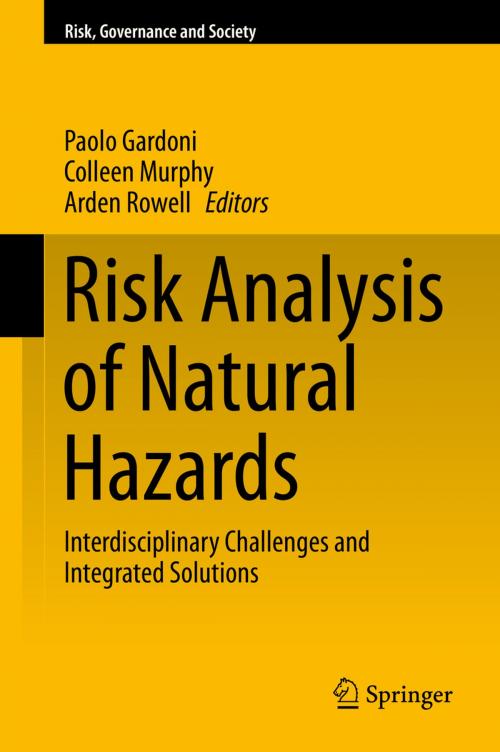Risk Analysis of Natural Hazards
Interdisciplinary Challenges and Integrated Solutions
Nonfiction, Science & Nature, Technology, Quality Control, Science, Business & Finance| Author: | ISBN: | 9783319221267 | |
| Publisher: | Springer International Publishing | Publication: | October 17, 2015 |
| Imprint: | Springer | Language: | English |
| Author: | |
| ISBN: | 9783319221267 |
| Publisher: | Springer International Publishing |
| Publication: | October 17, 2015 |
| Imprint: | Springer |
| Language: | English |
This volume investigates the interdisciplinary and cross-cutting challenges in the risk analysis of natural hazards. It brings together leading minds in engineering, science, philosophy, law, and the social sciences. Parts I and II of this volume explore risk assessment, first by providing an overview of the interdisciplinary interactions involved in the assessment of natural hazards, and then by exploring the particular impacts of climate change on natural hazard assessment. Part III discusses the theoretical frameworks for the evaluation of natural hazards. Finally, Parts IV and V address the risk management of natural hazards, providing first an overview of the interdisciplinary interactions underlying natural hazard management, and then exploring decision frameworks that can help decision makers integrate and respond to the complex relationships among natural events, the built environment, and human behavior.
This volume investigates the interdisciplinary and cross-cutting challenges in the risk analysis of natural hazards. It brings together leading minds in engineering, science, philosophy, law, and the social sciences. Parts I and II of this volume explore risk assessment, first by providing an overview of the interdisciplinary interactions involved in the assessment of natural hazards, and then by exploring the particular impacts of climate change on natural hazard assessment. Part III discusses the theoretical frameworks for the evaluation of natural hazards. Finally, Parts IV and V address the risk management of natural hazards, providing first an overview of the interdisciplinary interactions underlying natural hazard management, and then exploring decision frameworks that can help decision makers integrate and respond to the complex relationships among natural events, the built environment, and human behavior.















